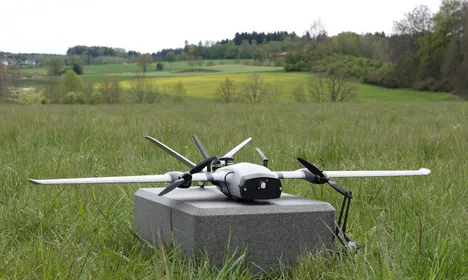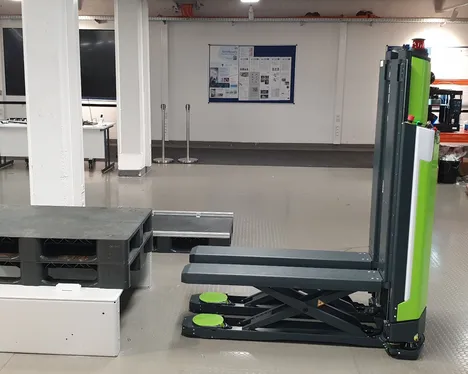Perception for Intelligent Systems (PercInS)
Our chair investigates novel methods and technologies for robotic platforms to sense their environment. By intelligent processing of perceived data, we aim to make robots more efficient and contribute to the safety of human operators in different applications.
Our research activities include:
Gas-Sensitive Robots for Pollution Monitoring & Emergency Response:

We want to give mobile robots the ability to detect and sense gases and airborne trace substances in their surroundings. Therefore, we are researching various sensor technologies and robotic platforms, ranging from ground-based rovers to flying drones. Motivated by disaster response scenarios and air quality monitoring applications, our main focus is on developing exploration algorithms that enable the robots to autonomously map gas distributions and localize hazardous gas leaks.
Mobile Robots for Intralogistics Applications in Shared Environments:

We are researching mobile robots designed to operate in shared environments for intralogistics applications. To achieve long-term autonomy, we aim to create compact yet comprehensive environment representations with fault awareness. Our approach involves developing map representations that store not only geometric information but also additional details such as semantics and dynamics. Additionally, we are exploring introspection approaches to detect and prevent localization failures. We are also investigating how radars and other novel sensing techniques can be utilized for localization and mapping.
Human-Robot Spatial Interaction:

Our research aims to enhance robotic intent communication for industrial and collaborative settings. Effective communication requires clear and intuitive methods for conveying robot intentions and actions. We develop anthropomorphic features like gestures and gazes to improve interaction quality and trust. We use multimodal data analysis to predict human movements and intents. Additionally, we explore integrating large language models to enable more adaptive and context-aware human-robot interactions.